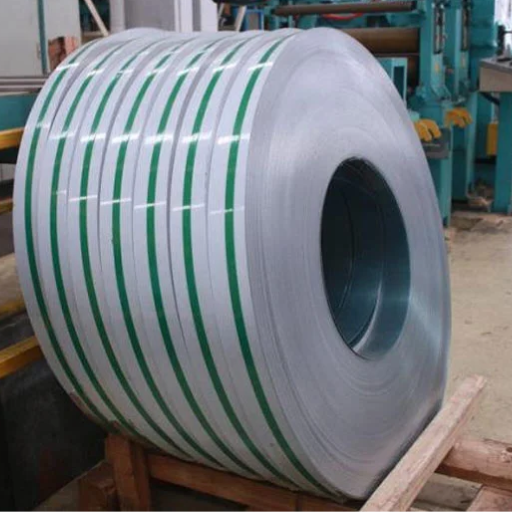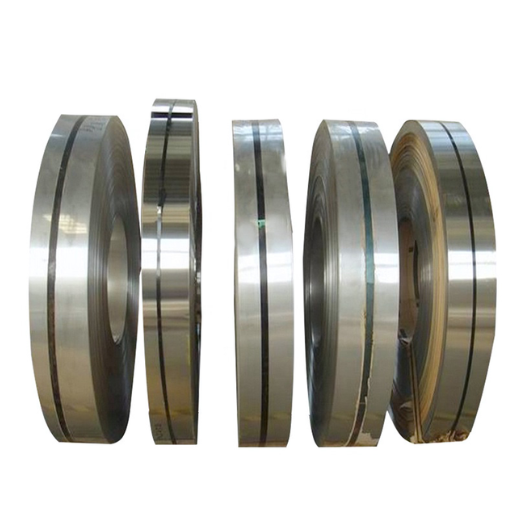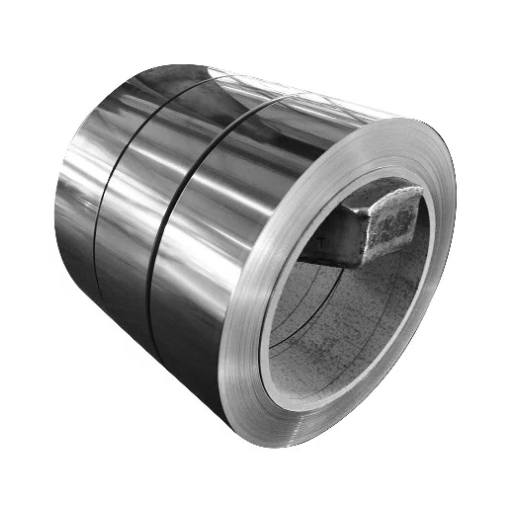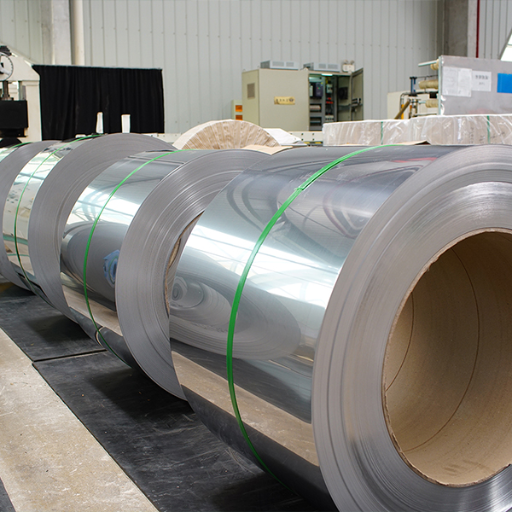Achieving optimal quality, longevity, and dependability is crucial regarding the 304L stainless steel strips. This blog will explain everything about 304L stainless steel coils and sheets. We will delve into the distinct features of 304L stainless steel, the different sectors that implement it, and the vital considerations in choosing a provider. In other sections, we will describe a dominant factory’s key features, such as modern machinery, rigid quality checkup procedures, and superb customer care. After reading this guide, experts from the field and amateurs who wish to learn more will be equipped with all the essential information to make educated choices regarding 304L stainless steel products.
What is 304L stainless steel, and how does it differ from 304?

Stainless steel304L is a low-carbon type of 304 stainless steel. Its carbon content is the fundamental difference between a stainless steel 304L and 304 steel. 304L has a maximum carbon value of 0.03 percent, while 304 stainless steel can have as much as 0.08 percent. The lesser amount of carbon in 304L accounts for its more excellent corrosion resistance, especially in cases where welding has to be done because it reduces the possibility of carbide precipitation. Although both grades are durable, strong, and oxidation-resistant, 304L is desirable in cases requiring better weldability and corrosion resistance.
Understanding the chemical composition of 304L
304L’s main constituent is iron, while chromium(18-20%), and nickel(8-12%) make up the main alloying constituents. These constituents account for the greater portion of its corrosion resistance and durability. 304 required a max of 0.03% carbon, enhancing carbide precipitation risk. Manganese, silicon, and phosphorus are found in small amounts, contributing to their strength and performance. The composition ensures that 304L can maintain the versatility and reliability needed in many industrial environments.
Lower carbon content: The key difference between 304 and 304L
The most notable difference between 304 and 304L is in the amount of carbon present. In contrast to 304’s maximum carbon limit of 0.08%, 304L has a lower maximum carbon limit of 0.03%. This lower amount reduces the risk of carbide precipitation during welding, thus making 304L the better option when corrosive environments and excessive welding are involved. The intergranular corrosion resistance is maintained and does not require post-weld annealing, unlike 304L.
Corrosion resistance properties of 304L stainless steel
Stainless steel 304L has an astounding corrosion resistance, specifically in acidic, oxidizing, and chloride environments. Its low carbon content eliminates the chance for intergranular corrosion after welding, thus making it suitable for food and chemical processing and marine applications. Thanks to the 18-20% chromium and 8-12% nickel composition in the material, 304L can withstand both pitting and crevice deterioration. Some other specifications are approximately 485 MPa for tensile strength, roughly 170 MPa yield strength, and a maximum carbon content of 0.03%.
What are the main applications of 304L stainless steel strips?

The corrosion resistance and mechanical properties of 304L stainless steel strips make them useful in a myriad of industries. Some of the most common include the creation of medical instruments, equipment for chemical processes, food-grade machinery, and vehicle parts. In addition, because of their robustness and resistance to harsh conditions, they can also be found in the marine sector, used in structural frameworks or as architectural pieces that serve as decorations.
The food processing industry uses 304L strips
The food processing industry also dramatically relies on 304L stainless steel strips, given their lack of corrosion, ease of cleaning, and hygiene maintenance. These strips are incorporated in manufacturing food-grade tools like mixing tanks, conveyor belts, storage containers, and even piping systems. A low carbon content (maximum 0.03%) lessens the chance of carbide precipitation forming during welding, which ensures surfaces remain clean. Furthermore, having a tensile strength of roughly 485 MPa and a yield strength of about 170 MPa, the material displays excellent durability to mechanical stress and proves long-lasting. Due to these, 304L stainless steel strips effectively withstand harsh working conditions where exposure to moisture, acids, and other food substances is constant.
Welding Applications: Why 304L is Preferred
304L stainless steel is preferred in welding due to its low carbon content and lower chances of carbide precipitation at the heat-affected zone or the “weld zone.” 304L has fewer chances of experiencing intergranular corrosion, meaning it has greater material strength and life. Besides, 304L has good weldability and does not require vigorous post-weld annealing, which is necessary to avoid warping or deformation of structural components.
Supporting its performance, 304L has 485 MPa of tensile strength and 170 MPa of yield strength, suggesting that it is strong enough to withstand stresses during and after welding. Besides, its melting point is between 2550 to 2650 degrees Fahrenheit (1399-1454 degrees Celsius), which enables it to withstand high-temperature welding. The Material can be welded using TIG (Tungsten-Inert Gas), MIG (Metal-Inert Gas), and resistance welding methods, which makes it applicable in many areas. Because of these properties, 304L stainless steel finds wide application in food processing, chemical equipment, and structural components of buildings and other constructions subjected to severe corrosive or damp conditions.
Other Common Uses in Various Industries
The way 304L stainless steel is used across countless industries is a testament to the material’s excellent corrosion resistance and mechanical properties. The food and beverage industry is central to producing cookware, storage tanks, and processing equipment owing to its hygienic surfaces and durable nature. Furthermore, it is employed to fabricate pipes, reactors, and containers in the chemical industry because of its ability to endure harsh chemical environments. Besides this, 304L is often used architecturally for railings and cladding, as well as in marine contexts, because it does not corrode or degrade in humid or saline atmospheres. Its mechanical properties and weldability make it a preferred choice for numerous structural and functional applications.
How to choose the right 304L stainless steel strip factory supplier?

Finding the best supplier for 304L stainless steel strips involves considering various factors. To start with, the reputation of the supplier and the experience they have dealing with stainless steel is critical. Their reputation can easily be checked through certificates issued to them, such as an ISO certificate. The supplier’s fabrication capabilities, including their production volume and custom requirements in dimensions and finishes, should also be analyzed. Pertinent delivery information, such as timelines and logistics, should also be checked to facilitate reliable and timely supply. Finally, pricing should be analyzed last. Strong consideration should be given to quality, consistency, customer service, and cost. A good supplier will provide proper communication and offer adequate and clear technical guidance.
Factors to consider when selecting a manufacturer
When choosing a manufacturer for 304L stainless steel strips, it is important to consider some key factors to ensure dependability and quality.
- Certifications and Compliance to Standards
Be sure that the manufacturer adheres to regulations within the field, such as having ISO 9001 certification, which explicitly outlines quality management. Other certifications, like ASTM A240 for stainless steel specifications, mean that they pass important safety and technical requirements.
- Material Quality and Testing
Establish the quality standards of the raw materials to be used in the production. Dependable manufacturers perform regular material tests, such as tensile strength tests (a minimum requirement of 485 MPa for 304L stainless steel) and corrosion resistance tests, to guarantee that the product complies with technical specifications.
- Production Capacity and Customization Capabilities
Check the manufacturer’s ability to cope with the volumes you require within your specified deadlines. They should also be able to accept custom orders, such as the thickness of the strip (0.3mm to 6mm), width (10mm to 600 mm), and surface finishments (2B, BA, or No4), depending on the application.
- Logistical Capabilities and Delivery Periods
Reasonable lead times are essential, as well as their delivery systems. A competent manufacturer should be able to provide information on shipping processes, and it usually takes 2-8 weeks for the order to be processed, depending on its complexity.
- Value and Cost Transparency
Although pricing is always a concern, the brand’s level of product consistency and quality should receive the most value consideration. When evaluating bids, make sure to include other forms of support, such as technical help, after-service provisions, and guarantees.
- Customer Reviews and Reputation Business
Check the provider’s reputation based on what customers say about them in reviews, case studies, or even testimonials. A good reputation coupled with years of experience dealing with stainless steel is a positive sign of a reliable partner.
Considering all of these factors makes it easier to select an appropriate manufacturer who meets your technical specifications and business objectives.
Importance of quality certifications and standards
It is my view that having standards and certifications is essential because they will tell you that pieces of stainless steel will be made in compliance with the industry’s safety, durability, and performance benchmarks. In my case, I tend to work with manufacturers who have ISO 9001 or even ASTM because I know that their processes and materials can be trusted. Having these certifications means a reliable guarantee of fewer risks because there will be compliance with everything, which translates into satisfaction in the long run.
Evaluating customer service and support
To analyze customer service and customer support, consider elements like content, crackdown deftness, and after-sale assistance. A dependable producer should answer calls and offer specialized guidance as clearly as possible during the entire exercise. Keep in mind factors like:
- Time of Response: Verify that the manufacturer resolves problems or responds to queries within 24-48 hours.
- Technical Assistance: Check their capability in advising on the appropriate materials, what design details are needed, and especially how corrosive or load-bearing the particular grades of stainless steel 304 and 316 could be.
- Follow-Up Service: Assess the extent to which they offer services such as repair under guarantee, supplying spare parts and repairing them, and guiding.
Through these, one can tell to what extent the manufacturer will assist him in meeting requirements before, during, and after the purchase of the product.
What are the available forms and dimensions of 304L stainless steel strips?

304L stainless steel strips are crafted to various shapes and sizes to service various industries. Generally, producers provide these in thicknesses between 0.1 mm and 6 mm and widths of 600 mm. Coiled strips, cut-to-length strips, and custom strips are all available to standard industry specifications. They also come in aesthetic and functional surface finishes like 2B, BA, and brushed.
Cold Rolled vs. Hot Rolled 304L Strips.
When comparing the differences between the cold-rolled and hot-rolled 304L stainless steel strips, it is imperative to analyze the methods of production, key features, and usage of the products in question.
- Production Method:
- Cold Rolled: This procedure includes rolling the steel at an ambient temperature after the hot rolling process is completed. This process guarantees tighter tolerances and improved surface finish.
- Hot Rolled: This process requires rolling the steel at temperatures higher than 926 degrees Celsius, which makes it easier to manipulate than cold-rolled strips.
- Surface Quality:
- Cold-rolled strips have enhanced surface refinement of 2B or BA and are, therefore, suited for highly polished uses.
- Hot Rolled strips have a rough look, typically due to high temperature and scaling processes.
- Proportional Accuracy:
- Cold-rolled strips have tighter tolerances, which guarantees constant thickness and width, which is very important for high-precision tasks.
- Hot-rolled strips have varying thicknesses and widths with less precision because of heating and rolling.
- Physical Properties:
- The immediate difference from the features mentioned is that cold-rolled 304L strips are stronger and harder. This is due to the work hardening that takes place during the rolling process. The trade-off would have to be lower ductility.
- Although hot-rolled strips are easier to work with, they have a lower strength-to-weight ratio than cold-rolled ones.
- Applications:
- Cold-rolled strips are used to produce automotive parts, kitchen equipment, and medical instruments because of their higher aesthetic value and precision.
- Surface finish and precision dimensions are less crucial in structural components, construction, and heavy machine manufacturing; therefore, hot-rolled strips are primarily used in these industries.
- Technical Parameters:
- Cold Rolled Thickness Range: Typically between 0.1 mm to 3 mm.
- Hot Rolled Thickness Range: Typically above 3 mm to 6 mm.
- Widths for Both Types: The manufacturer determines the width, usually around 600 mm.
- Tensile Strength (Cold Rolled): Approximately 515 MPa.
- Tensile Strength (Hot Rolled): Approximately 485 MPa.
Knowing these distinctions informs the selection of 304L stainless steel strips for specific project needs.
Standard Thickness and Width Options
As part of my examination, I found the cold-rolled strips of 304L stainless steel to have an average thickness of 0.1 mm to 3 mm, while hot-rolled strips began at 3 mm and exceeded 6 mm in length. Furthermore, both types were found to be available at 600 mm in width, though certain manufacturers may offer different dimensions. These specifications are intended to fit as many purposes as possible, accommodating workload and aesthetic expectations.
Precision Strip Specifications
The 304L precision stainless strips received the most scrutiny owing to their wrought shape, width, and length, which permits stringent checks of the contours and dimensions. These strips’ tolerances are generally higher than most, at ±0.01 mm for flatness and surface quality. It is important to emphasize that these strips are considered level to a height ranging from 0.02 mm to 2.0 mm, with a length not exceeding 600 mm.
Key Technical Parameters for Precision Strips:
- Thickness Ranges: 0.02 mm – 2 mm.
- Width Ranges: 5 mm – 600 mm.
- Surface Finishes: Primarily provided with low roughness during processing in BA (Bright Annealed) or 2B finish for better surface smoothness.
- Tensile Strengths: They generally range with little specificity from 485 MPa to 700 MPa due to variance in the annealing and work hardening processes.
- Hardness (HV): The value is between 160 HV for stripped Ali and more than 200 HV for stripped hardened.
- Edge Treatments: Edges can be slit, rounded, or deburred depending on customer application needs.
Due to their exceptional machinability, weldability, and corrosion resistance, Precision strips are extensively applied in electronics, automotive, and medical instruments. The combined mechanical properties, dimensional accuracy, and surface quality of the im parts provide an advantage over other materials used to manufacture springs, connectors, and other precision parts. Some manufacturers may offer custom project specifications, including coatings or annealing for certain atmospheres.
References
- SteelPRO Group – A leading manufacturer and supplier of 304L stainless steel strips.
- Stainless Sheets – Offers high-performance 304L stainless steel strips with excellent corrosion resistance.
- Combined Metals – Provides 304L stainless steel strips, slit coils, and custom sheets.
Frequently Asked Questions (FAQ)
Q: What are the main properties of 304 stainless steel coil?
A: 304 stainless steel coil is an austenitic stainless steel alloy known for its excellent resistance to corrosion, high ductility, and good fabrication properties. It contains chromium (18-20%) and nickel (8-10.5%), contributing to its durability and versatility. This grade of stainless steel is widely used in various industries due to its low carbon content (0.03% max), which reduces carbide precipitation and improves weldability.
Q: How does 304L stainless steel differ from regular 304 grade?
A: The carbon content is the main difference between 304 and 304L stainless steel. 304L, also known as UNS S30403, has a lower carbon content (0.03% max) than regular 304 (0.08% max). This lower carbon content in 304L makes it more resistant to carbide precipitation during welding or high-temperature applications, reducing the risk of intergranular corrosion. Both grades offer similar corrosion resistance and mechanical properties, but 304L is often preferred for applications requiring extensive welding.
Q: What are the advantages of using a 304L stainless steel strip from a top manufacturer?
A: Choosing a 304L stainless steel strip from a top manufacturer offers several advantages: 1. Consistent quality and dimensional accuracy 2. Improved corrosion resistance, especially in welded areas 3. Better formability and weldability 4. Compliance with international standards like ASTM A240 5. Enhanced durability and longevity of the final product 6. Versatility for use in various industries and applications 7. Reliable supply chain and technical support from the manufacturer
Q: How does 316L stainless steel compare to 304L in terms of properties and applications?
A: While 304L and 316L are austenitic stainless steels, 316L contains molybdenum, which gives it superior corrosion resistance, especially against chlorides and other harsh chemicals. 316L is more expensive but performs better in marine environments and chemical processing applications. 304L is more widely used and suitable for general-purpose applications where extreme corrosion resistance is not required. Both grades have low carbon content, making them resistant to intergranular corrosion during welding.
Q: What forms are available for 304L stainless steel from top manufacturers?
A: Top 304L stainless steel strip manufacturers typically offer the material in various forms to meet different industry needs: 1. Coils: Continuous long strips for high-volume applications 2. Sheets: Flat, cut-to-length pieces for fabrication 3. Plates: Thicker, flat pieces for heavy-duty applications 4. Hot rolled stainless steel plate: For applications requiring greater thickness 5. Cold rolled strips: For applications needing tighter tolerances and smoother finishes 6. Custom-cut sizes and shapes upon request
Q: What industries commonly use 304L stainless steel coil and sheet?
A: 304L stainless steel coil and sheet are widely used in various industries due to their excellent properties. Some typical applications include: 1. Food and beverage processing equipment 2. Chemical and pharmaceutical manufacturing 3. Architecture and construction 4. Automotive components 5. Kitchen appliances and cookware 6. Medical and laboratory equipment 7. Heat exchangers and pressure vessels 8. Pulp and paper industry 9. General fabrication and metalworking
Q: How do I choose between 304, 304L, and 321 stainless steel for my application?
A: Choosing between 304, 304L, and 321 stainless steel depends on your specific application requirements: 1. 304: General-purpose grade suitable for most applications with good corrosion resistance and formability. 2. 304L: Preferred for welding applications or exposure to temperatures between 425-815°C (800-1500°F) to prevent carbide precipitation. 3. 321: Stabilized grade with added titanium, suitable for high-temperature applications (800-1500°F) where stress-relieving is not possible. When selecting, consider factors such as operating temperature, welding requirements, corrosive environment, and cost. Consult a reputable stainless steel strip manufacturer for expert advice on the best grade for your needs.







